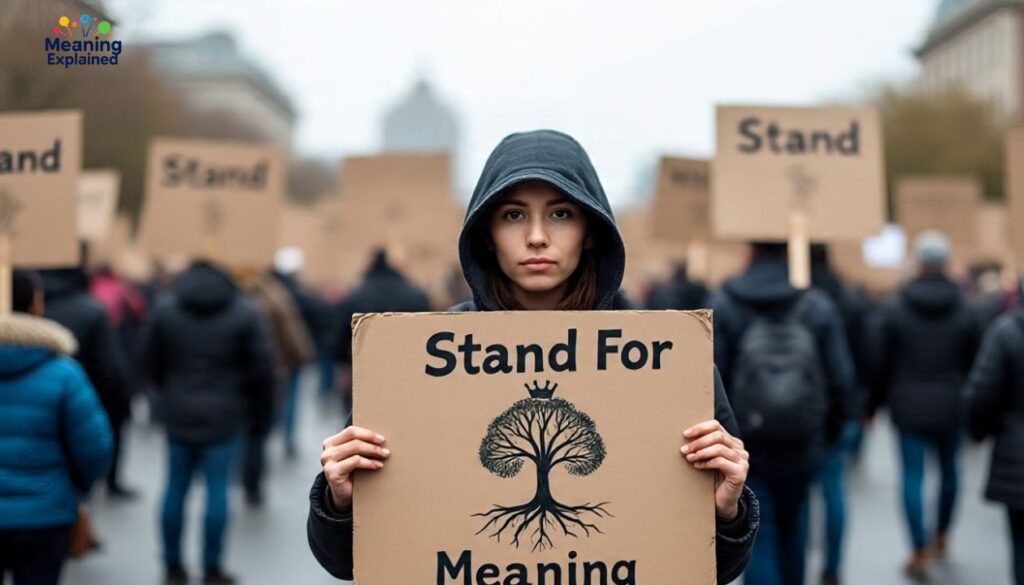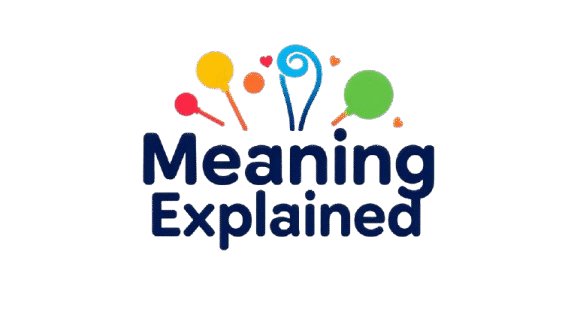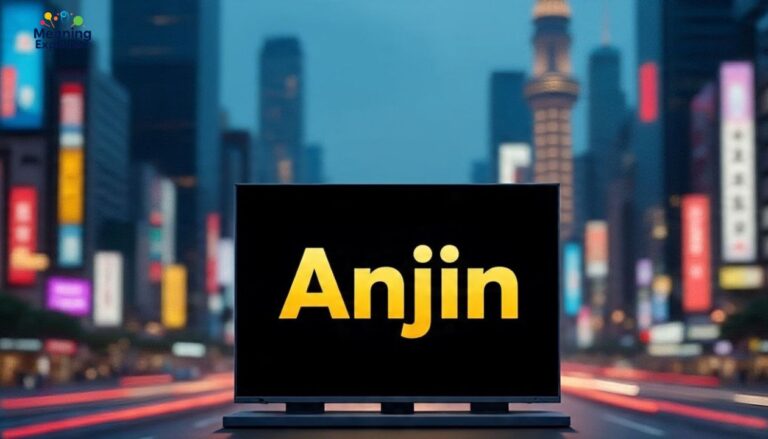The word “anjin” carries a fascinating story from Japan’s past. It means “pilot” or “navigator” and was used for skilled sailors who guided ships safely. This term also holds deeper meanings of trust and leadership.
“Anjin” became famous through William Adams, an English navigator who earned the title Miura Anjin in the 1600s. He was the first Western samurai, helping Japan with trade and navigation. The word still sparks interest for its historical and cultural value.
Today, “anjin” is less common but connects to ideas like guidance and pauses, such as “hiatus,” and phrases like “stand for and.” Exploring these terms shows how language shapes communication. This article dives into their meanings and uses in 2025.
What Does “Anjin” Mean?
“Anjin” (安針) is a Japanese term meaning “pilot” or “navigator.” It historically referred to maritime pilots guiding ships through treacherous waters. The term gained fame through William Adams, known as Miura Anjin, the first Western samurai in Japan. Beyond its literal meaning, “anjin” symbolizes guidance, trust, and expertise.
Historical Context
In feudal Japan, anjin were critical for trade and safety. They mastered coastal routes, tides, and weather patterns. Their role demanded leadership and quick thinking. William Adams, arriving in Japan in 1600, earned the title Miura Anjin for his navigation skills, aiding Japan’s maritime trade. The term reflects both technical skill and cultural reverence.
Understanding “Hiatus” Meaning and Usage
“Hiatus” contrasts with “anjin” by denoting a pause rather than guidance. It’s a versatile term used across contexts to describe temporary breaks.
Definition of Hiatus
A hiatus is a temporary interruption or gap, derived from Latin meaning “opening.” It applies to breaks in work, media (e.g., a TV show pausing between seasons), or speech. It signifies rest or reflection, complementing the active guidance of “anjin.”
Stand For And Meaning in Text

The phrase “stand for and” clarifies what abbreviations or acronyms represent, especially when linking multiple concepts.
- “Stand for” means to represent or signify.
- “Stand for and” connects parts of an acronym, like “NASA stands for National Aeronautics and Space Administration,” where “and” links the terms.
This phrase ensures clarity in communication, unlike the symbolic depth of “anjin.”
Polite, Professional, and Casual Alternatives for Well Wishes

Expressing good wishes is a key part of communication, varying by context, relationship, and tone. Below are 20 well-wishing alternatives, each with details on usage, tone, example, and nuance, tailored for 2025.
- Best Regards
- Usage: Professional emails, letters
- Tone: Formal, polite
- Example: “Thank you for your time. Best regards, Ayesha.”
- Nuance: Neutral, widely accepted in business settings.
- Warm Wishes
- Usage: Semi-formal notes, holiday cards
- Tone: Friendly, heartfelt
- Example: “Warm wishes for a joyful Eid.”
- Nuance: Conveys kindness, great for celebrations.
- All the Best
- Usage: Informal to semi-formal messages
- Tone: Encouraging, friendly
- Example: “All the best for your new job!”
- Nuance: Versatile, supportive for various occasions.
- Kind Regards
- Usage: Formal correspondence
- Tone: Respectful, professional
- Example: “Kind regards, Salman.”
- Nuance: Courteous, ideal for business emails.
- Take Care
- Usage: Casual conversations, texts
- Tone: Caring, personal
- Example: “Great meeting you. Take care!”
- Nuance: Warm, used among acquaintances.
- Wishing You Success
- Usage: Professional or motivational contexts
- Tone: Encouraging, formal
- Example: “Wishing you success in your venture.”
- Nuance: Uplifting, suits career milestones.
- Cheers
- Usage: Informal emails, chats
- Tone: Upbeat, casual
- Example: “Thanks for the help. Cheers!”
- Nuance: Friendly, common among colleagues.
- Best of Luck
- Usage: Formal or informal settings
- Tone: Hopeful, positive
- Example: “Best of luck with your exams.”
- Nuance: Universal, conveys optimism.
- With Gratitude
- Usage: Formal thank-you notes
- Tone: Appreciative, respectful
- Example: “With gratitude for your support.”
- Nuance: Sincere, for formal appreciation.
- Have a Great Day
- Usage: Casual interactions
- Tone: Cheerful, light
- Example: “See you soon. Have a great day!”
- Nuance: Friendly, suits daily exchanges.
- May You Prosper
- Usage: Formal or literary contexts
- Tone: Dignified, hopeful
- Example: “May you prosper in all endeavors.”
- Nuance: Poetic, ideal for speeches.
- Stay Well
- Usage: Casual or semi-formal messages
- Tone: Caring, gentle
- Example: “Stay well during the holidays.”
- Nuance: Personal, shows concern for health.
- Good Luck
- Usage: Informal settings
- Tone: Supportive, simple
- Example: “Good luck with your presentation!”
- Nuance: Straightforward, widely used.
- Yours Sincerely
- Usage: Formal letters
- Tone: Respectful, traditional
- Example: “Yours sincerely, Fatima.”
- Nuance: Classic, for official correspondence.
- Wishing You Joy
- Usage: Semi-formal cards, messages
- Tone: Warm, celebratory
- Example: “Wishing you joy this festive season.”
- Nuance: Heartfelt, for special occasions.
- Stay Safe
- Usage: Casual or semi-formal texts
- Tone: Caring, protective
- Example: “Traveling soon? Stay safe!”
- Nuance: Shows concern, timely in 2025.
- Best Wishes
- Usage: Formal to semi-formal
- Tone: Polite, versatile
- Example: “Best wishes for your wedding.”
- Nuance: Broadly applicable, warm.
- With Best Wishes
- Usage: Formal letters, cards
- Tone: Courteous, warm
- Example: “With best wishes for your recovery.”
- Nuance: Slightly formal, caring.
- Here’s to You
- Usage: Informal toasts, messages
- Tone: Celebratory, friendly
- Example: “Congrats! Here’s to you!”
- Nuance: Fun, for achievements.
- Keep Shining
- Usage: Informal, motivational texts
- Tone: Upbeat, encouraging
- Example: “You’re doing great. Keep shining!”
- Nuance: Modern, positive, popular in 2025.
How to Choose the Best Alternative Based on Context and Tone
Selecting the right well-wishing phrase depends on:
- Relationship: Use “Best regards” for colleagues, “Cheers” for friends.
- Medium: Emails need formal closings; spoken words can be casual.
- Occasion: “Wishing you success” for promotions, “Take care” for farewells.
- Culture: Ensure phrases align with cultural norms for respect.
Tailoring your choice enhances communication effectiveness.
Frequently Asked Questions
What is the literal meaning of Anjin?
“Anjin” (安針) means “pilot” or “navigator” in Japanese, symbolizing safe guidance through sea routes.
Who is Miura Anjin in Japanese history?
Miura Anjin was William Adams, an English navigator who became a samurai in the 1600s, aiding Japan’s maritime trade.
Is Anjin still used in modern Japanese?
Yes, but rarely. Modern terms like “pairottsu” (pilot) are more common, though “anjin” retains historical significance.
What does ‘stand for and’ mean in text?
It clarifies acronyms, e.g., “NASA stands for National Aeronautics and Space Administration,” linking multiple terms.
How do I say best wishes professionally?
Use “Best regards,” “Kind regards,” or “Warm wishes” for professional emails and letters.
What does anjin mean in English?
In English, “anjin” means “pilot” or “navigator,” representing leadership and maritime skill.
Summary
“Anjin,” a Japanese term meaning “pilot” or “navigator,” historically referred to skilled maritime guides, symbolizing leadership and trust, notably through William Adams, the first Western samurai. Its modern use is rare, overshadowed by terms like “pairottsu,” but it retains cultural significance. Related concepts like “hiatus,” meaning a pause, and “stand for and,” which clarifies acronyms, highlight language’s dynamic nature.
Well-wishing alternatives, such as “Best regards” for formal emails or “Cheers” for casual chats, adapt to context and tone in 2025. These expressions, alongside “anjin,” reflect how language conveys guidance, clarity, and goodwill. Understanding their usage enriches communication across diverse settings.

